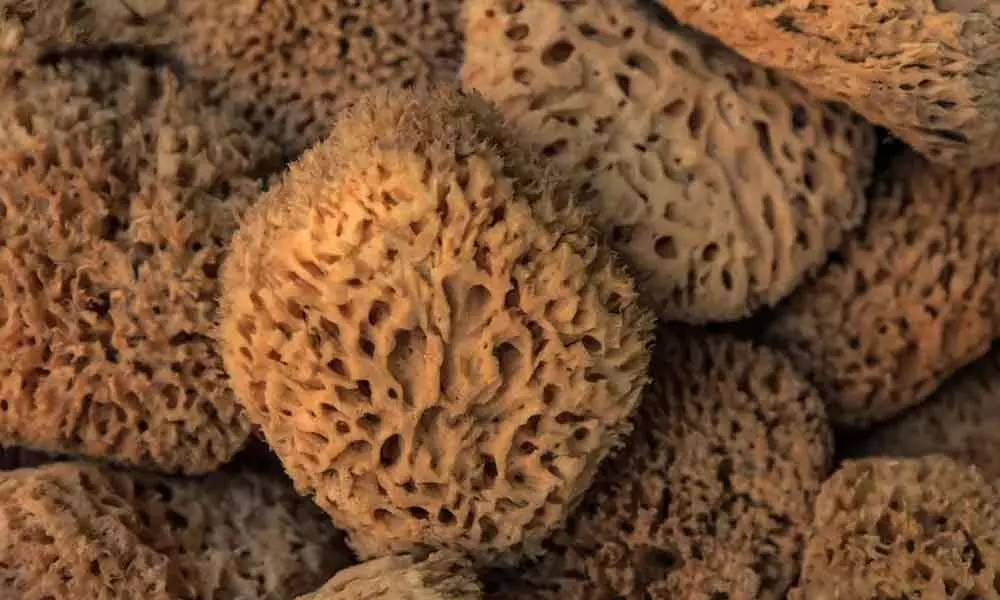The Specific Sponge Structures Could Be Earth's Earliest Animal

890 million-year-old sponge fossil discovery
- Elizabeth Turner flew to the Mackenzie Mountains, a magnificent range nestled aside in a remote portion of northeastern Canada, in a helicopter.
- Turner, who has become a professor of geology at Laurentian University in Ontario, claims she was interested in learning more about the reefs on a microscopic and macroscopic scale.
Elizabeth Turner flew to the Mackenzie Mountains, a magnificent range nestled aside in a remote portion of northeastern Canada, in a helicopter.
The mountains include the geological vestiges of an old reef system created by algae, providing a look into the past.
Turner, who has become a professor of geology at Laurentian University in Ontario, claims she was interested in learning more about the reefs on a microscopic and macroscopic scale. She added that they are asenormous as modern reefs, with a diameter of kilometres and a thickness of hundreds of metres.
She claims that she was 'stymied' when she first got in the highlands because there was a lot more limestone, a type of calcium-based rock, but it was essentially featureless.
She observes that the weathering is just utterly grey, and you can't tell what's inside and Turner gathered samples from all over the 890 million-year-old ancient reef also known as Little Dal, returned to the lab to investigate, slicing the rock into exceedingly thin slices and examining it under a microscope.
She noticed something unusual among the samples. A sequence of worm-like microstructures made up the strange, convoluted object but they had nothing to do with her PhD, so she set the thing aside and decided to investigate it later. Those strange samples didn't bother her, but she knew they were significant.
She stated that they certainly don't appear to be microbiological structures, she claimed, because they were too sophisticated for that. They also possessed a texture she'd observed before in younger rocks. Perhaps they were linked to sponges, porous, primary organisms with no organs or nervous system that are among Earth's oldest animal inhabitants.
Turner outlines the research case for this notion in a report published in the journal Nature on Wednesday, claiming that the microstructures revealed in the ancient Little Dal reefs are sponge microfossils, putting them about 350 million years older than the oldest species yet recorded.
It's a strong statement, and one that should undoubtedly be contested, but Fritz Neuweiler, a geologist at Laval University in Quebec who was not involved in the study, termed it a good step forward, noting that the report is well-founded, gutsy, and provocative.
Meanwhile, the Earth was a completely different planet 890 million years ago. Rodinia was the only supercontinent that existed. However,North America was in the middle of this massive landmass, with the rest of the continents clustered around it. The Little Dal reef system was nestled away in the depths of the ocean.
At the time, the reef was teeming with life, especially microbes like cyanobacteria, or algae, which, like plants, use the sun to generate energy. Stromatolites, bacterial mats that can develop to be a metre tall, were also found. Turner wishes she could have snorkelled over it.
She also praised the beauty as it wouldhave looked like a magnificent meadow of stromatolites, but it would have been blue-green due to cyanobacteria, and it would have been sticky.
The little dal reef is not able to exist in the sun-exposed area they most likely lived in the crevices between rocks and cracks, between cavities, and possibly even on the reef's sides.
Turner explained that existing nearcyanobacteria have proven to be really useful to sponges. It will produce oxygen as a result they would get a source of food from it since cyanobacteriacreate polysaccharides. The sponges obtain their food through water in and out of their bodies. For the sponges, it's 'nirvana,' according to Turner.
The reefs were submerged over time, but the calcite remained, allowing Turner to investigate fossils within the rock 890 million years ago. Turner's findings, if proven, have the potential to reshape history.
Turner refers to it as 'slow science.' She was able to base her hypothesis on clear data from the literature on younger sponges, and she believes her interpretation is correct.
She does not, however, put a decisive end to it. Turner cautions that it would be stupid to be overconfident. She would like to state that what she is doing is giving a well-informed recommendation.
During, by being honest, sponges and early life have been studied by scientists previously.
Sponge origins have been suggested as far back as 800 million years, although tangible proof is insufficient.
Research published in 2016 reported having uncovered sponge-like molecules in 650 million-year-old rock. A distinct group of scientists, notably Jochen Brocks, a geobiologist at the Australian National University, examined the molecules further and concluded that they were most likely generated by algae and geological factors rather than by sponges.
Although the Little Dal reef system is so unique, matching microstructures from other formations throughout the world are difficult to come by.
Turner stated that it will take time to find more examples of these microstructures and confirm that they are old sponge body fossils. It is possible that these structures weren't created by sponges at all, but by something even more unusual that we haven't explored.
Next Story














